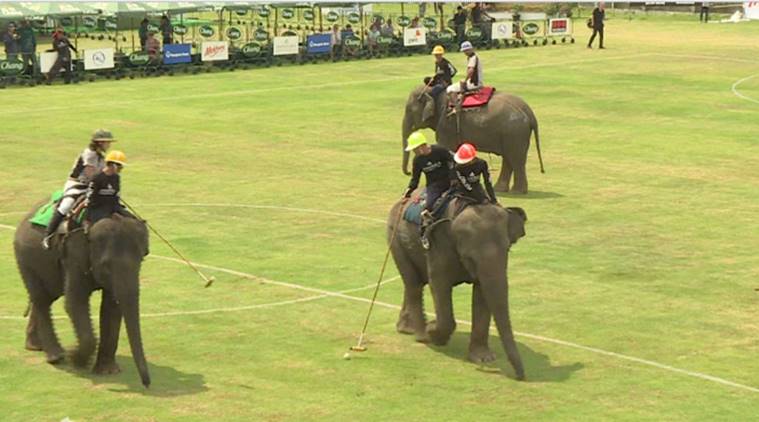Elephant polo is a variant of polo played while riding elephants. It is played in Nepal, Rajasthan (India), and Thailand. England and Scotland regularly field teams. The equipment consists of a standard polo ball and six to ten-foot cane (similar to bamboo) sticks with a polo mallet head on the end. The pitch is three-quarters of the length of a standard polo pitch, due to the lower speed of the elephants. Two people ride each elephant; the elephants are steered by mahouts, while the player tells the mahout which way to go and hits the ball.
Elephant polo originated in Meghauli, Nepal. Tiger Tops in Nepal remains the headquarters of elephant polo and the site of the World Elephant Polo Championships.



